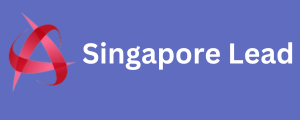Email frequency is a delicate balance. Too many emails overwhelm subscribers. Too few mean they forget your brand. Optimizing email frequency is crucial. It directly impacts engagement levels. The right frequency keeps users interested. It prevents unsubscribes and complaints. This maximizes your campaign effectiveness. It boosts long-term customer value.
Imagine a friend who texts too much. Or one who never texts at all. Neither is ideal for a good relationship. Email frequency is very similar. You need to find the “just right” amount. This varies by audience and industry. It requires careful testing and analysis. It’s key to keeping your audience happy.
The Impact of Email Frequency on Key Metrics
Email frequency greatly impacts rcs data metrics. Firstly, too high frequency: Leads to email fatigue quickly. Causes increased unsubscribe rates. Drives up spam complaints. Secondly, too low frequency: Subscribers may forget your brand. Miss out on timely offers. Engagement metrics might drop. Thirdly, optimal frequency: Maintains high open and click rates. Keeps unsubscribe rates low. Fosters consistent engagement.
Strategies for Finding Your Optimal Frequency
Finding optimal frequency how to implement the customer journey in hubspot needs strategy. 1. Segment Your Audience: Different segments tolerate different frequencies. High-value customers might want more emails. New leads need a specific cadence. 2. Analyze Current Performance: Look at open, click, unsubscribe rates. Spot trends related to send volume. 3. A/B Test Different Frequencies: Send group A 2 emails/week. Send group B 3 emails/week. Measure which performs better. 4. Offer Preference Centers: Let subscribers choose frequency. (e.g., daily, weekly, monthly). This empowers them directly. 5. Use Behavioral Triggers: Send emails based on actions. (e.g., purchase, browse abandonment). These are highly relevant and welcome. 6. Monitor Competitor Frequency: See what successful competitors do. Don’t just copy, but learn. 7. Start Conservative, Then Scale: Begin with fewer emails. Gradually increase if engagement allows.
Continuous Optimization and Personalization
Continuous optimization marketing list is crucial. Regularly review performance data. Analyze KPIs for frequency impact. Look for any negative trends appearing. Refine segments over time. As user behavior changes, adapt. Re-evaluate their preferred frequency. Personalize frequency for individuals. Advanced platforms can do this. Based on their past engagement. Leverage AI for predictions. AI can suggest optimal send times. It can also recommend frequency. Gather direct feedback from users. Ask in surveys about email volume. Address their concerns proactively. Optimizing email frequency is ongoing. It balances engagement and business goals. It’s key to a healthy, profitable email program.
